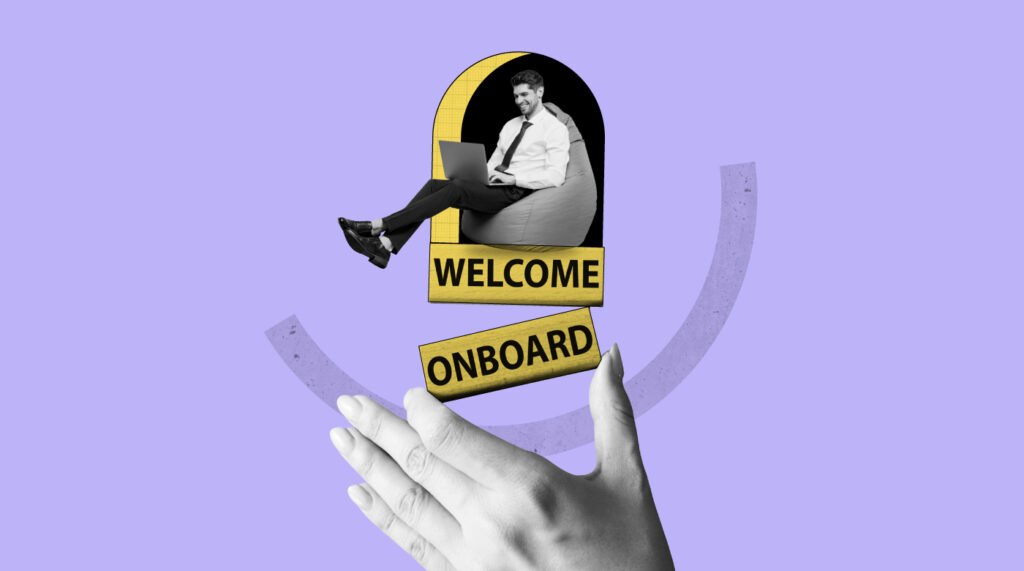Employee onboarding can be an intimidating and overwhelming experience for new hires, but it doesn’t need to be.
While onboarding automation can make the process more efficient, a personalized onboarding experience will make employees feel more welcome, prepare them for success quicker, and ultimately leave them feeling like they made the right decision.
Here are some best practices for the onboarding process to help you make it personal.
5 Ways To Personalize Onboarding
So how can you personalize employee onboarding in your workplace? Well, it first starts with an effective preboarding, including a nice welcome letter, and a well-thought-out employee orientation.
But for the onboarding experience, here are some of my favorite ideas to start with.
Get to know them before their first day
The secret to a great onboarding program is that it doesn’t start on day one. Before a new employee starts work, the HR department will collect core data such as date of birth and social insurance number for payroll purposes, but the onboarding process can seek other data as well.
Get to know the new hire before they even set foot in the office. Find out what they’re passionate about and why they wanted to join your organization. Ask about some of the things they like—that way you can surprise them with something unexpected in their welcome pack.
Do they have a sport they love? Consider a small nicknack for their desk. Is there a type of food that they love? Consider getting that cuisine for lunch on their first day, or getting them a gift card to a local restaurant.
Goal setting
No one’s onboarding is going to look 100% the same and each will vary by role, seniority, knowledge and skill level, and also the personal goals of the individual.
First, consider implementing an onboarding checklist that lets employees know where they’re at in the process and what’s still left to come (onboarding software can help with this).
New hires will feel as though they’ve accomplished a small milestone after each stage of the process, and that they’re on their way to success in the role.
Next, think about how to improve employee engagement long-term. Have new team members meet with colleagues and managers to talk about that long-term goal setting early on, and what success can look like for them further down the road.
If a new employee tells you that they have goals of reaching management and you see that they have the potential, start nurturing it at this early stage.
A mentorship program, for example, can help enhance employee training beyond the formal manager-employee relationship.
Testing
Have you ever sat in a seminar or lecture where you knew all the material already, and felt like it was a complete waste of your time being there? The onboarding process doesn’t need to feel like that for your new hires!
Instead of guessing at their experience from their resume, consider testing them on core material to see how much they already know. This can be done in an elearning platform that makes it convenient and painless for them.
This testing can be done in a way that’s engaging and isn’t patronizing or punitive. Consider incorporating quizzes, games, and other aspects that cater to various learning styles to keep participants engaged.
The results will let you create a more personalized onboarding experience that’s less time-consuming, more efficient, and lets your new hires feel respected for the knowledge that they’re bringing to the table.
Send personalized swag
Many companies send corporate-branded swag in a welcome kit—calendars, notebooks, hats, pens, etc. It’s a nice feeling, but most employees realize that at the end of the day it’s all promotional for the company’s benefit.
Instead, consider incorporating personalized employee swag that has an employee’s name or even initials on it. Many promotional product vendors will be happy to include a monogram that can help personalize the employee onboarding experience.
A new employee might use a branded notebook or carry a branded tote bag out of necessity, but at least some part of it will still feel like work. Imagine instead how that employee would feel if the bag had their name on it, or if they were drinking out of a mug that had their name right alongside the company’s.
It may cost a little bit extra in the swag budget, but that hands-on experience of being part of the company is irreplaceable. Personalized employee swag ties that employee directly to the company, and it’s something that can happen from day one.

Welcome them with a meal or team-building activity
Starting a new job can be nerve-racking, and a simple meal or team-building activity can 1) make someone feel special and 2) be a nice, informal way to introduce the new starter to their colleagues.
Even if a team works largely or fully remote, that in-person bonding over social events is irreplaceable. Employees have a chance to connect with each other beyond focused video calls, and they form relationships that let them feel integrated into the environment.
Remember that team building can also happen regularly on a smaller scale.
Final Thoughts
Most workplaces understand the importance of the employee onboarding process, but few realize just how important it is.
Personalization will go a long way to ensuring that the new team member feels welcomed and has a future at your organization.
The common consensus is that a 30, 60, 90 day plan helps ensure that new team members are properly initiated into the culture and properly supported.
To measure the effectiveness of your onboarding, look at metrics such as voluntary turnover and use onboarding surveys to gather feedback from the new team members themselves to optimize the onboarding process.
If you have any questions feel free to hit us up in the comments or join the conversation over in the People Managing People Community, a supportive community of HR and business leaders passionate about building organizations of the future.
Further resources:


